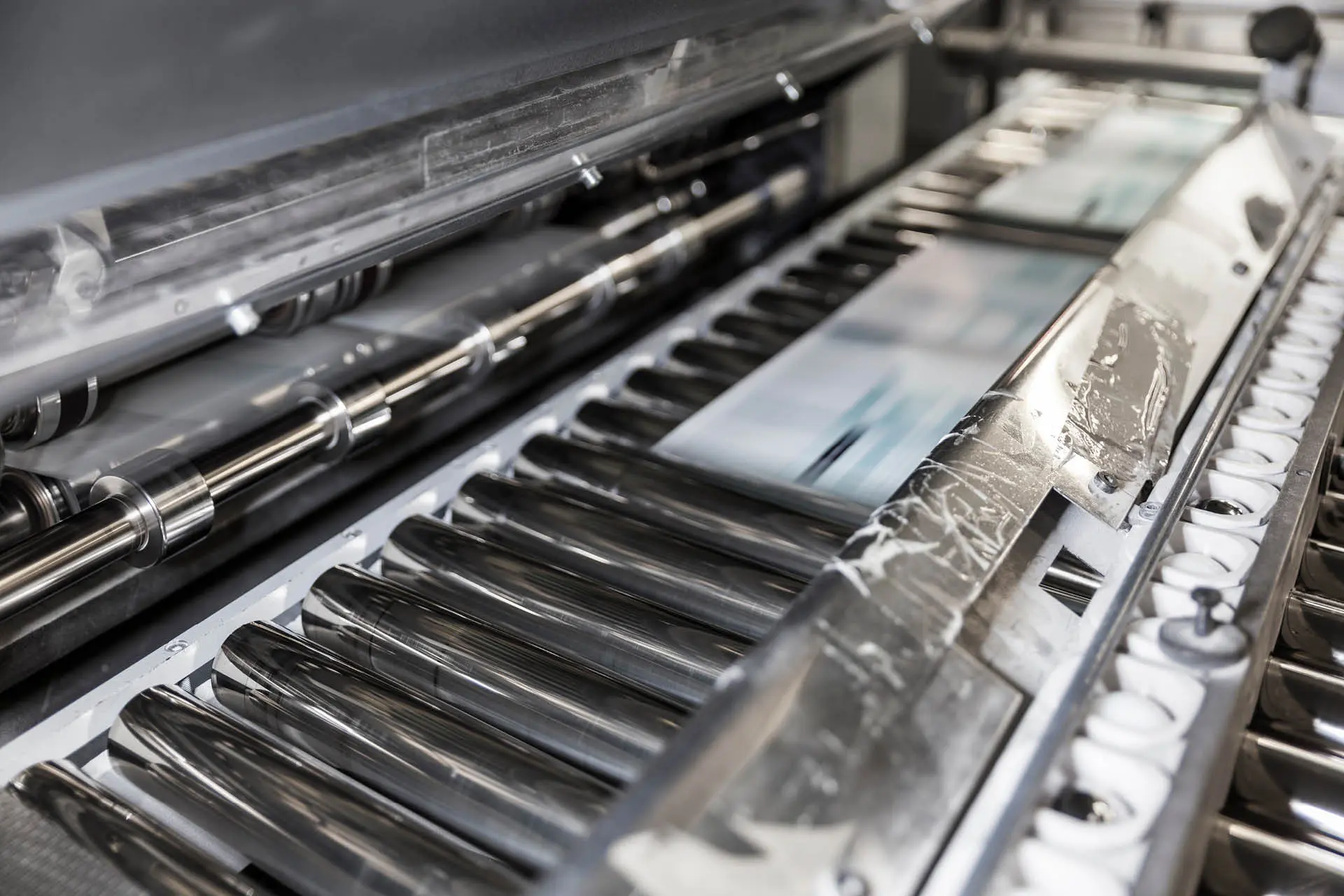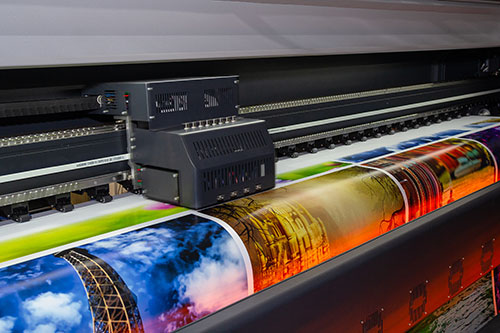Can litho printing Be an Sustainable Printing Option?
The Crucial Guide to Recognizing Litho Printing and Its Applications
Litho printing stands as a significant approach in the printing industry, rooted in the principles of oil and water repulsion. This strategy not just provides top notch images but likewise deals with numerous commercial demands. Its applications range from advertising products to packaging, showcasing its flexibility. As the sector adapts to new modern technologies, the evolution of litho printing questions about its future and significance in an electronic landscape. What exists in advance for this enduring technique?

What Is Litho Printing?
Litho printing, an extensively made use of printing strategy, relies upon the concept of oil and water repulsion. This technique uses a level printing surface, generally a metal plate, which is treated to ensure that the picture locations are responsive to oil-based inks while the non-image locations repel them. The procedure begins with the production of a photo on home plate, often through illustration or photographic means. Once the photo is prepared, home plate is moistened with water, complied with by the application of ink. The ink sticks only to the picture areas, enabling accurate reproduction of graphics and message. Litho printing is preferred for its capacity to generate top notch prints with fine information and lively colors. It is generally made use of in business applications, consisting of newspapers, magazines, and packaging, showcasing its versatility and performance in fulfilling the needs of contemporary printing.
The Background of Lithography
Although lithography is a modern-day printing staple, its beginnings trace back to the late 18th century when German playwright Alois Senefelder invented the method in 1796. Initially established as a method for recreating texts and images, lithography utilized a flat rock surface to produce prints via a chemical process. Senefelder's innovation permitted higher versatility and artistic expression contrasted to previous printing methods.By the 19th century, lithography got widespread approval, ending up being a prominent selection among musicians and authors. It made it possible for the automation of illustrations, maps, and posters, especially impacting the printing sector. The strategy even more evolved with the intro of lithographic presses, enhancing efficiency and quality.As the industrial revolution advanced, lithography adapted to satisfy the needs of commercial printing, leading the way for contemporary applications. Today, it continues to be a crucial technique in numerous markets, consisting of publishing, product packaging, and great art recreation.
How Litho Printing Works
A key feature of litho printing is its dependence on the concept of oil and water repulsion - litho printing. In this process, pictures are moved from a level surface area, commonly a metal or polymer plate, to paper. The plate is treated to make sure that the locations meant for printing bring in ink, while the non-image locations repel it as a result of their affinity for water. The printing begins by moistening the plate with water, which sticks to the non-image areas. Consequently, an oil-based ink is used, sticking only to the designated picture areas.When home plate enters contact with the substrate, the ink is transferred, developing a print. The litho printing process is capable of generating high-grade pictures with great information. It is usually used for automation because of its effectiveness and uniformity, making it a preferred method for industrial printing applications
Benefits of Litho Printing
One remarkable advantage of litho printing is its capability to generate top quality photos constantly, making it a perfect selection for industrial projects. This printing method utilizes a level printing plate, making sure even ink distribution and sharp information. Litho printing is likewise renowned for its color precision, allowing vivid and true-to-life recreations, which is necessary for branding materials.Moreover, it supports a variety of substrates, consisting of paper, cardboard, and even particular plastics, enhancing its convenience. The process is affordable for huge runs, as economic climates of scale decrease per-unit costs. Additionally, litho printing has a quick turn-around time, enabling effective manufacturing schedules.Its sturdiness also implies that published products withstand fading, making certain that the end product preserves its aesthetic appeal over time. In general, these benefits make litho publishing a preferred choice throughout numerous markets, adding to its long-lasting popularity.
Applications of Litho Printing in Company
As organizations increasingly look for dependable and top notch printing remedies, litho printing becomes a principal in various applications. This technique is especially favored for creating advertising products such as brochures, flyers, and directories, many thanks to its ability to provide lively shades and sharp photos. Additionally, litho printing is frequently used for packaging remedies, allowing firms to develop appealing tags and boxes that enhance product appeal.In the market of company identification, litho printing is crucial in creating specialist stationery, company cards, and advertising goods, which aid reinforce brand recognition. Additionally, it is extensively made use of in the publishing sector for printed materials such as publications and publications, where constant top quality try this web-site is paramount. Generally, litho printing's flexibility and efficiency make it an essential device for services aiming to interact effectively and develop a strong market presence.
Artistic Use Litho Printing
Litho printing functions as a functional tool in the domain name of printmaking, offering artists a distinct method to reveal their imagination. This strategy permits a variety of imaginative applications, from traditional prints to contemporary interpretations. By exploring the subtleties of litho printing, musicians can harness its distinct top qualities to boost their work.

Printmaking Strategies Introduction
The artistry of printmaking incorporates a varied series of strategies, with litho printing attracting attention for its special method to photo creation. This approach counts on the concept of oil and water repulsion, allowing musicians to attract directly onto a sedimentary rock or metal plate with a greasy medium. When prepared, home plate is dampened and tattooed, transferring the image onto paper through pressure. Litho printing is celebrated for its capacity to create great information and rich tonal variations, making it a preferred selection amongst musicians. Furthermore, the process is flexible, accommodating both traditional strategies and modern-day adaptations. This versatility allows litho printing to bridge numerous imaginative styles, enriching the printmaking landscape with its distinct attributes and capacities.
One-of-a-kind Artistic Applications
Discovering the one-of-a-kind creative applications of litho printing reveals its exceptional convenience in different creative areas. Artists use litho printing to develop intricate layouts and structures, enabling expressive and in-depth works. The procedure assists in the recreation of dazzling shades, making it perfect for pictures and great art prints. Many contemporary musicians embrace lithography for its capacity to combine standard techniques with contemporary principles, causing innovative art work. In addition, litho printing is commonly employed in the production of limited edition prints, improving their value and charm. The tactile high quality of litho prints includes a distinct dimension, you can try here bring in collection agencies and art lovers alike. In general, litho printing stays a considerable medium for imaginative expression, bridging traditional approaches with contemporary imagination.
The Future of Litho Printing in a Digital Globe
As the printing industry evolves, litho printing faces the challenge of incorporating digital technologies to remain pertinent. Methods concentrated on digital integration, together with patterns in sustainability and development, will form its future - litho printing. Recognizing these dynamics is vital for industry stakeholders looking to adjust to a quickly altering landscape
Digital Integration Approaches
An expanding number of litho printing companies are welcoming electronic integration strategies to remain competitive in a significantly digital landscape. By including digital process, these firms can improve procedures and boost efficiency. This assimilation allows for real-time data administration and boosted communication between divisions, reducing turnaround times substantially. Additionally, electronic devices enable better personalization and customization of published materials, providing to particular consumer demands. Business are additionally adopting hybrid printing services that incorporate conventional litho strategies with digital modern technologies, providing adaptability in production. Leveraging data analytics assists in recognizing market trends and client choices, allowing businesses to make informed decisions. Overall, electronic integration is ending up being crucial for litho printing firms intending to introduce and react to progressing market requirements.
Sustainability and Advancement Patterns

Often Asked Questions
What Materials Are Typically Used in Litho Printing?
The products commonly utilized in litho printing consist of aluminum plates, ink, water, and paper. Each element plays an important duty in the printing procedure, guaranteeing top notch picture recreation and reliable transfer of ink onto the substrate.
Exactly How Does Litho Printing Contrast to Digital Printing?
Litho printing uses superior color consistency and top quality for huge runs, while digital printing stands out in short runs and modification. Each technique has distinctive benefits, catering to various needs based upon manufacturing range and cost-efficiency.
What Is the Typical Turnaround Time for Litho Printing Projects?
The typical turn-around time for litho printing projects varies, generally ranging from a couple of days to a number of weeks. Aspects influencing this duration consist of task intricacy, amount, and required ending up processes, influencing general manufacturing routines.
Can Litho Printing Accommodate Personalized Sizes and Formats?
Litho printing can certainly accommodate custom-made dimensions and styles, enabling versatility in layout. This adaptability allows customers to achieve special print end results customized to their details demands, boosting the total efficiency of their projects.
What Are the Environmental Effects of Litho Printing?
The ecological impacts of litho printing include source consumption, chemical use, and waste generation. Nevertheless, advancements in lasting methods and environment-friendly materials are gradually minimizing these adverse results, promoting go to my site a more ecologically liable technique to printing.